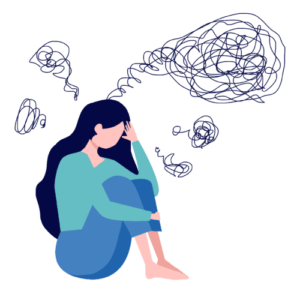
Burnout Test
Answer these simple questions to understand more about your Burnout. We share instant results and keep your information confidential.

What is Burnout Test?
Burnout assessment is a systematic evaluation of an individual’s physical, emotional, and mental well-being, aimed at identifying symptoms of burnout. It involves using standardized questionnaires, interviews, or other tools to measure factors such as exhaustion, cynicism, and reduced professional efficacy. The assessment helps gauge the severity of burnout and its impact on a person’s life and work. Early detection allows for timely intervention and support to prevent further deterioration of mental health and overall performance.
Who can benefit from this Burnout Test?
Burnout assessment can benefit a wide range of individuals, including employees, students, caregivers, healthcare professionals, and entrepreneurs. Anyone who experiences chronic stress, exhaustion, or a decline in their emotional well-being due to prolonged exposure to demanding circumstances may benefit from such an assessment. Identifying burnout early on allows individuals and organizations to implement targeted interventions, support systems, and self-care strategies to prevent the negative consequences of burnout, enhance resilience, and promote overall well-being and productivity in both personal and professional settings.


Burnout Test Accuracy
The accuracy of burnout assessment can vary depending on the tools and methods used. Standardized questionnaires and validated scales are generally reliable in assessing burnout symptoms. However, accuracy may be influenced by the individual’s honesty in responding to the assessment and their self-awareness of burnout symptoms. Additionally, cultural and contextual factors can also impact the interpretation of results. To ensure greater accuracy, combining multiple assessment approaches, considering context-specific factors, and involving qualified professionals in the evaluation process can enhance the reliability of burnout assessments.
Types of Burnout Test
Maslach Burnout Inventory (MBI):
Measures emotional exhaustion, depersonalization, and reduced personal deeds, widely used in various profession
Copenhagen Burnout Inventory:
Assesses personal, work-related, and client-related burnout, focusing on the service and healthcare sectors.
Oldenburg Burnout Inventory (OLBI):
Evaluates exhaustion and disengagement components, designed for use in occupational settings.
Burnout Clinical Subtype Questionnaire:
Encouraging individuals to voluntarily report their experiences as victims or perpetrators.
Shirom-Melamed Burnout Measure:
Evaluates physical & mental exhaustion, useful for studying burnout’s physiological impact.
Stanford Presenteeism Scale:
Assesses the effects of burnout on work productivity & presence while being strained.
Handling Burnout Issues
Handling burnout issues requires a comprehensive approach that focuses on self-care, setting boundaries, and seeking support. Here are some strategies:
- Self-awareness: Recognize the signs of burnout, such as fatigue, irritability, and decreased motivation.
- Self-care: Prioritize sleep, exercise, and healthy eating to support physical and mental well-being.
- Set boundaries: Learn to say no to excessive demands and establish a healthy work-life balance.
- Seek support: Talk to friends, family, or a mental health professional about your feelings and experiences.
- Time management: Organize tasks, prioritize responsibilities, and avoid overloading yourself.
- Relaxation techniques: Practice mindfulness, meditation, or deep breathing to reduce stress.
- Disconnect: Take breaks from technology and work-related activities to recharge.
- Engage in hobbies: Pursue activities you enjoy to unwind and find joy outside of work.
- Professional help: Consider seeking counseling or therapy if burnout symptoms persist or worsen.
- Workplace changes: Advocate for supportive policies, workload adjustments, or employee wellness programs at your workplace.
Remember, addressing burnout is essential for long-term well-being and productivity.